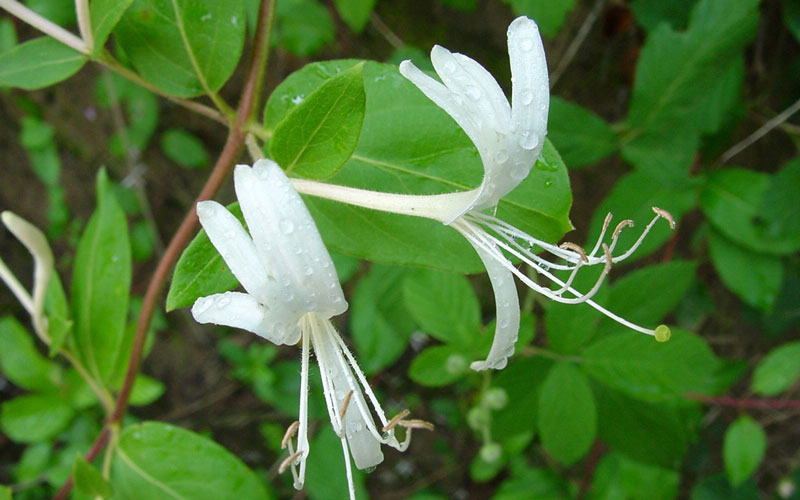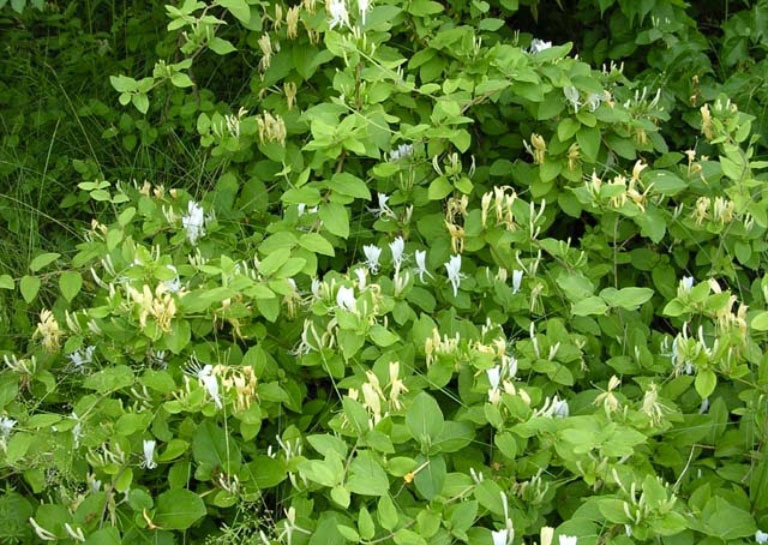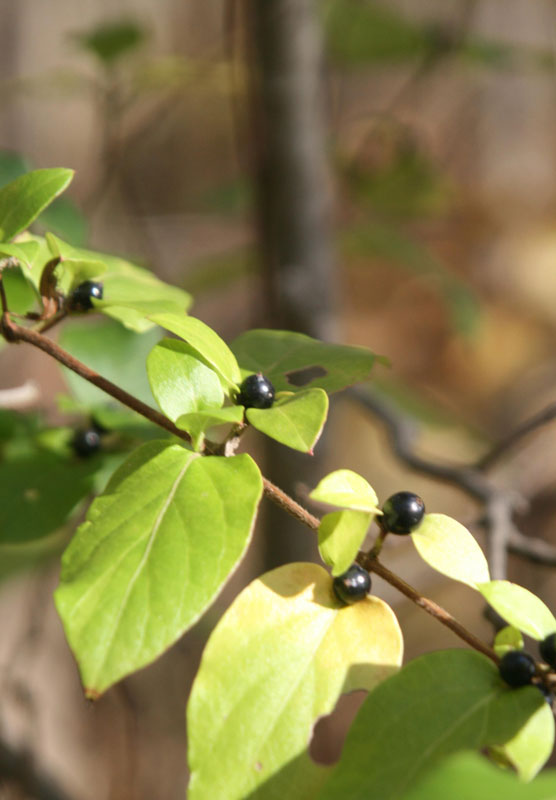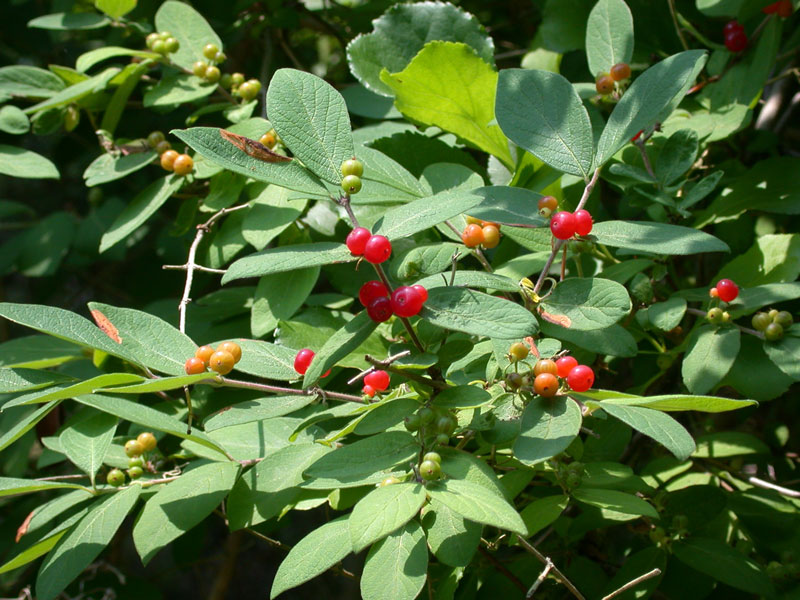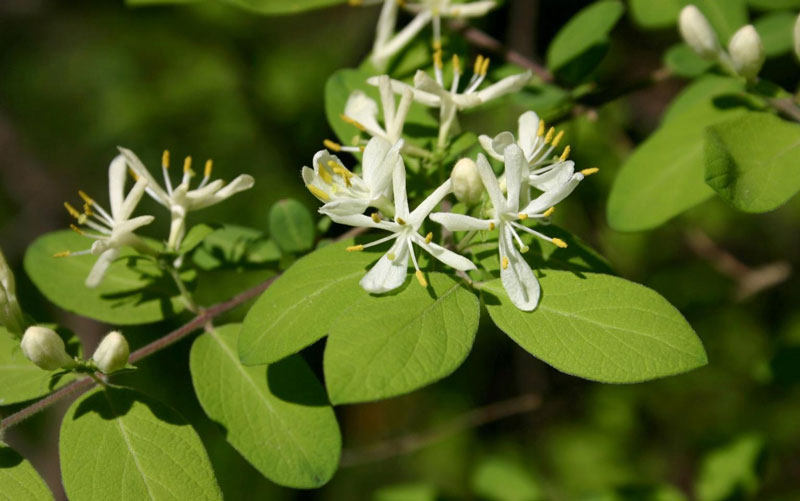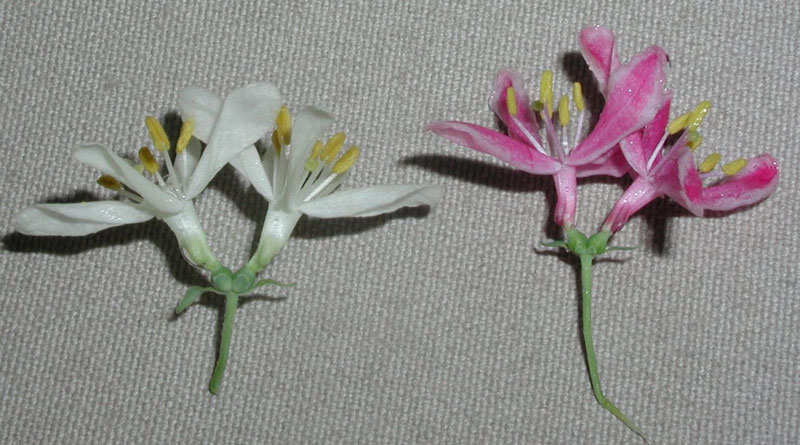Japanese, Morrow's, Show Fly, Tatarian & Amur Honeysuckle
Lonicera japonica, L. morrowii, L. morrowii x tatarica and L. maackii
Description
Japanese honeysuckle (Lonicera japonica) are deciduous vines and shrubs native to Asia. Japanese honeysuckle vine stems are hollow and woody, and can be up to 2 inches thick and are typically 6-10 feet long, sometimes up to 30 feet. They have ovate-shaped leaves are opposite, roughly 1 ½ to 3 inches long. Flowers are large, showy and sweet smelling, colored white, yellow, cream or pinkish, yellowing with age. They are tubular with reflexed lips; 4 fused petals form the upper lip and a single petal forms the lower. Blooms April to June. Rarely blooms in low light. Fruits are round, ¼ inch which appear singly or in pairs in leaf axils. They are purple-black when ripe and contain 2-3 seeds (source). Learn more about all these species here.
Morrow’s honeysuckle (L. morrowii) is a deciduous shrub reaching a height of 6-8 feet. It has oblong leaves 4–6 cm long. It leafs out quite early in the spring, and in North America is commonly the first deciduous shrub with foliage in March. The flowers are white to pale yellow, and the fruit is a red berry 7–8 mm diameter containing numerous seeds. The berries, while eaten frequently by birds, are considered poisonous to humans (source).
Amur honeysuckle (L. maackii) is a deciduous shrub/tree grows to 18 ft., spread to 15 ft. White, paired flowers from the leaf axil, flowers July to September. Leaves hairy and come to a narrow point. Fruit small, round, red berry-like. Full to part sun environments.
Habitat
Colonizes disturbed sites, open woods, woodland edges, forest openings, floodplains, fields, roadsides, barrens and fence lines.
Location in Nebraska
Priority invasive plant in the Mixedgrass prairie ecoregion. Found in eastern and northeastern Nebraska.
Pathway of Introduction and Spread
Introduced to the United States in the early 1800's for ornamental, erosion control and wildlife uses. Seeds are dispersed over long distances by birds. Sprawling vines also can root where they contact the soil, and underground stems (rhizomes) send up new shoots (source).
Management
Manual controls include Hand pulling and digging seedlings in Spring, Summer, Fall.
Mechanical control includes prescribed burning in the Spring.
Chemical foliar applications of glyphosate can be used for control Spring through Fall. Combined management by cutting plant stems and herbicide application of glyphosate can be done for control in Summer, Fall and warm winter days.
Learn more about managment & control here
Leslie J. Mehrhoff, University of Connecticut, Bugwood.org
Chuck Bargeron, University of Georgia, Bugwood.org
Chris Evans, University of Illinois, Bugwood.org
Stacey Leicht, University of Connecticut, Bugwood.org
